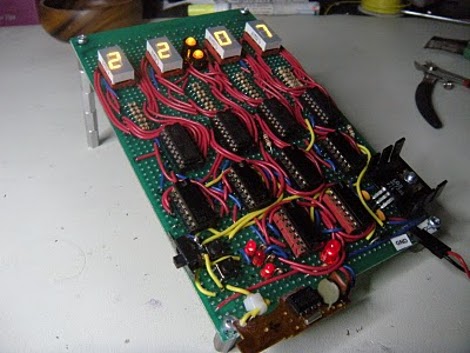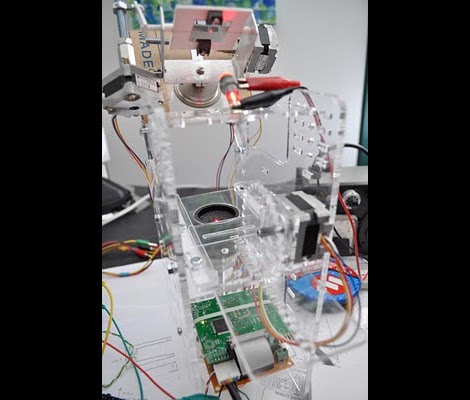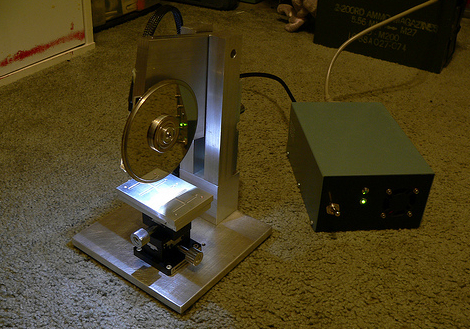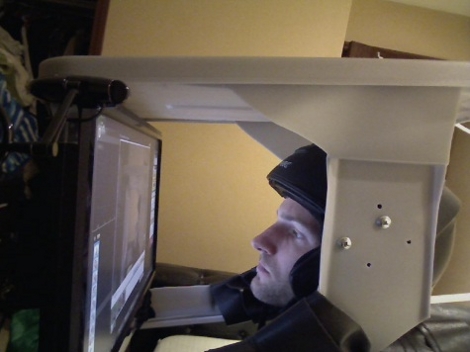
At first we thought this looked hastily thrown together and quite possible useless. Then we watched the video, embedded after the break, and realized it is quite a handy bench sander. [Mhkabir] opened up an older hard drive, removed the read head, and added a piece of carefully cut sand paper. When you hook it up to your bench supply you’ve got a small sander ready to use. We can’t wait to try it on some small PCB edges. Now that we’ve seen a sander and a chop saw, we wonder what’s next?















